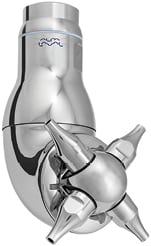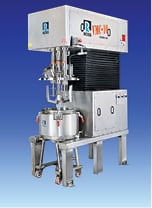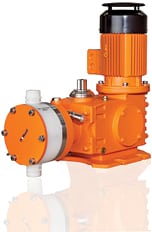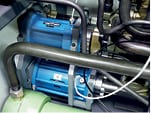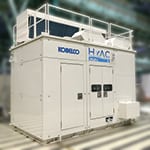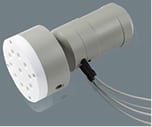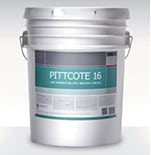New Products & Services
April 2017
The new TJ40G rotary tank-cleaning machine (photo) uses a high-impact jet stream to effectively clean tough tank residues and minimize the risk of product contamination. This four-nozzle rotary jet head also cleans tanks 60% faster than static spray-ball technology, thereby increasing production uptime. And because it cleans faster, this new device uses less water and less cleaning agents which reduces operating costs by up to 70%, says the company. The TJ40G is capable of handling tough tank residues, as well as solids up to 1 mm in the cleaning fluid in tank sizes of 50–1,000 m³. This is particularly important for demanding process lines, such as applications within a brewery, where particles may be re-circulated in cleaning media before completing the cleaning cycle. Also, the unit’s hygienic self-cleaning construction ensures that the flow of the cleaning fluid reaches the exterior surfaces of the rotary jet head, as well as the critical interior components, including all bushings, bearings and inner surfaces. This minimizes the risk of product contamination and ensures high product quality.— Alfa Laval AB, Lund, Sweden
The VersaMix Multi-Shaft Mixer (photo) is designed for mixing pastes, creams and gel-type products, with the capabilities of powder dispersion, emulsification, dissolution, deagglomeration, homogenization, heating, cooling and deaeration. All of these functions are achieved in a closed system, without the need for any transfer steps. The mixer’s three-wing anchor, high-speed disperser and high-shear rotor-stator arrangement operate independently at different speed ranges to deliver uniformity in both low- and high-viscosity media. All product-contact surfaces are polished 316L stainless steel. The mixer cover includes multiple ports for charging raw materials and the installation of a vacuum or pressure transmitter, thermoprobe and tank light. It mates with a jacketed cone-bottom vessel that is designed for 100% discharge through a flush diaphragm valve. A 23-in. clearance from the valve outlet to the floor allows operators to position a bucket under the vessel to catch finished product after the mixing cycle. — Charles Ross and Son Co., Hauppauge, N.Y.
Launched at this month’s Hannover Fair (April 24–28), the hydraulic diaphragm pump Hydro/ 4 (photo) supplements this company’s Hydro/ 2 and Hydro/ 3 types, thereby extending the application range to higher capacities. The pump covers the capacity range from 130 to 1,680 L/h at 7 to 25 bars absolute. The Hydro/ 4 is equipped with a polytetrafluoroethylene (PTFE) multi-layer metering diaphragm. The multi-layer diaphragm ensures safe and leakage-free metering. With material options including stainless steel, polyvinylidene difluoride (PVDF) and Hastelloy C, the Hydro/ 4 can be used universally in numerous applications. As standard, all pump types are equipped with a fixed-setting pressure-relief valve that is integrated into the hydraulics and a multi-layer diaphragm with a diaphragm-rupture warning system. The reproducibility of the metering is better than±1% in the stroke length range of 20 to 100%. — ProMinent GmbH, Heidelberg, Germany
Components and assemblies are often tested in cold chambers at temperatures down to –40°C. This company can equip its Volumeter flowmeter (photo) with electronic sensors that are suitable for such low temperatures upon request. The upper temperature limit is 200°C. For even measurements in extreme cold, the special advantages of the device’s “screw” measuring method offers advantages over other methods, such as gear or Coriolis. In particular, the Volumeter offers a high measuring precision (±0.1% of the measured value) and a measuring range of 1:100. This wide measuring range makes it possible to pass through the broad characteristic curves during the functional testing of hydraulic components. — Kral AG, Lustenau, Austria
This company has started marketing the HyAC mini-A (photo), an all-in-one, compact compressor package for stationary hydrogen refueling stations designed for use in the U.S. The HyAC mini-A consists of a high-pressure H2 compressor and a refrigerator sold together with a high-pressure storage tank unit and a dispenser as a set. The HyAC mini-A has a footprint 10% smaller than the HyAC mini sold in Japan since 2014. The HyAC series consists of two models: a single-unit, high-pressure H2 compressor, named HyAC, and a compact package consisting of the hydrogen compressor and other major equipment called the HyAC mini. To meet the U.S. fueling protocol, the filling pressure of the HyAC mini-A was raised to 87.5 MPa. The HyAC mini-A is equipped with a remote monitoring system, and also includes compact micro-channel heat exchangers called DCHE. — Kobe Steel, Ltd., Tokyo, Japan
Up to now, solenoid valves have been used for switching between lines used for measuring gases, but a considerable effort is required for servicing such arrangements in the event of a failure. This company has developed an alternative — a new, automated measuring-point switch (photo). These point switches can be used in enclosed spaces, such as cleanrooms, and are located upstream of the gas analyzers. The switch can monitor 8, 10 or 16 measuring points. The device clocks all active sampling boxes with a pre-defined interval. In the event of an alarm, the measuring points can be switched manually or individually in order to determine the exact location of the gas emission. The automated measuring switch is equipped so that eight measuring-point changeover switches can be connected to each other. — EM-Technik GmbH, Maxdorf, Germany
The latest release of STAR-CCM+ software, v12.02, includes several new features to help product development organizations enhance and accelerate their ability to digitally simulate and understand how a product will perform in the real world using the digital twin — a precise virtual model of a product’s physical and performance characteristics. New analysis tools combined with enhanced visual realism enable STAR-CCM+ v12.02 to help users unlock deeper meaning behind complex engineering simulations. STAR-CCM+ v12.02 introdu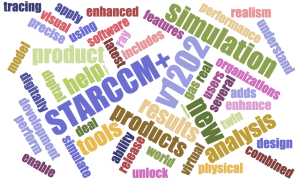 ces ray tracing capability that allows engineers to apply photo-realistic renderings to their design and simulation results. In addition to providing new tools for the analysis of simulation results, STAR-CCM+ v12.02 adds capabilities to accelerate simulation throughput for products that deal with reacting flows, such as furnaces, reformers, internal combustion engines and gas turbines. — Siemens AG, Munich, Germany
ces ray tracing capability that allows engineers to apply photo-realistic renderings to their design and simulation results. In addition to providing new tools for the analysis of simulation results, STAR-CCM+ v12.02 adds capabilities to accelerate simulation throughput for products that deal with reacting flows, such as furnaces, reformers, internal combustion engines and gas turbines. — Siemens AG, Munich, Germany
Pittcote 16 coating (photo) is a new low-temperature, anti-abrasive (LTAA) product that is designed for application with this company’s Foamglas insulation blocks, curved segments (PSG), half shells (PSH) and fitting covers. Pittcote 16 LTAA coating is a water-based, rubberized latex resin that provides a durable bore coating to insulation substrates and reduces abrasion from vibrating piping or equipment. Due to its quick drying and brush/spray application capabilities, the product also reduces production time and increases efficiency. The coating can be used on a wide range of service temperatures, from cold and cryogenic equipment to above ambient (up to 120°C), allowing for reduced inventory requirements. — Pittsburgh Corning, Pittsburgh, Pa.
